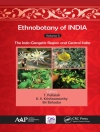Of all the outputs of forests, water may be the most important. Streamflow from forests provides two-thirds of the nation’s clean water supply. Removing forest cover accelerates the rate that precipitation becomes streamflow; therefore, in some areas, cutting trees causes a temporary increase in the volume of water flowing downstream. This effect has spurred political pressure to cut trees to increase water supply, especially in western states where population is rising. However, cutting trees for water gains is not sustainable: increases in flow rate and volume are typically short-lived, and the practice can ultimately degrade water quality and increase vulnerability to flooding. Forest hydrology, the study of how water flows through forests, can help illuminate the connections between forests and water, but it must advance if it is to deal with today’s complexities, including climate change, wildfires, and changing patterns of development and ownership. This book identifies actions that scientists, forest and water managers, and citizens can take to help sustain water resources from forests.
Committee on Hydrologic Impacts of Forest Management & Division on Earth and Life Studies
Hydrologic Effects of a Changing Forest Landscape [PDF ebook]
Hydrologic Effects of a Changing Forest Landscape [PDF ebook]
Dieses Ebook kaufen – und ein weitere GRATIS erhalten!
Sprache Englisch ● Format PDF ● Seiten 180 ● ISBN 9780309121095 ● Verlag National Academies Press ● Erscheinungsjahr 2008 ● herunterladbar 3 mal ● Währung EUR ● ID 7141060 ● Kopierschutz Adobe DRM
erfordert DRM-fähige Lesetechnologie












